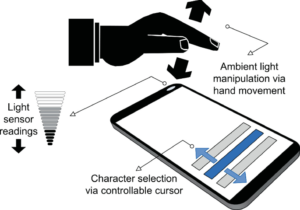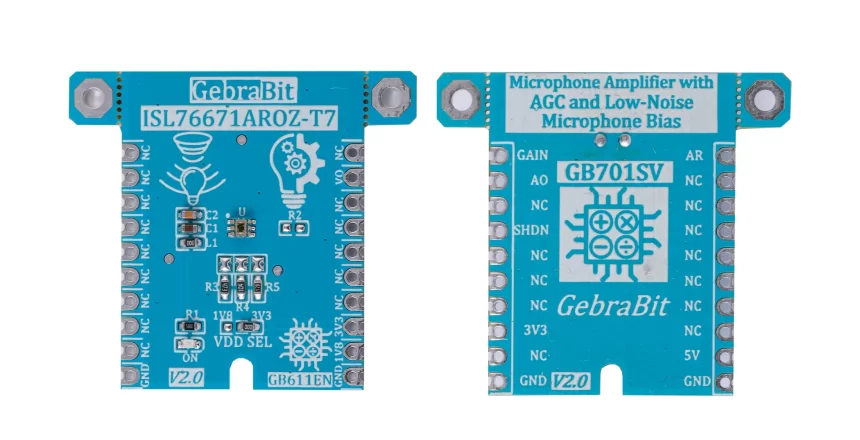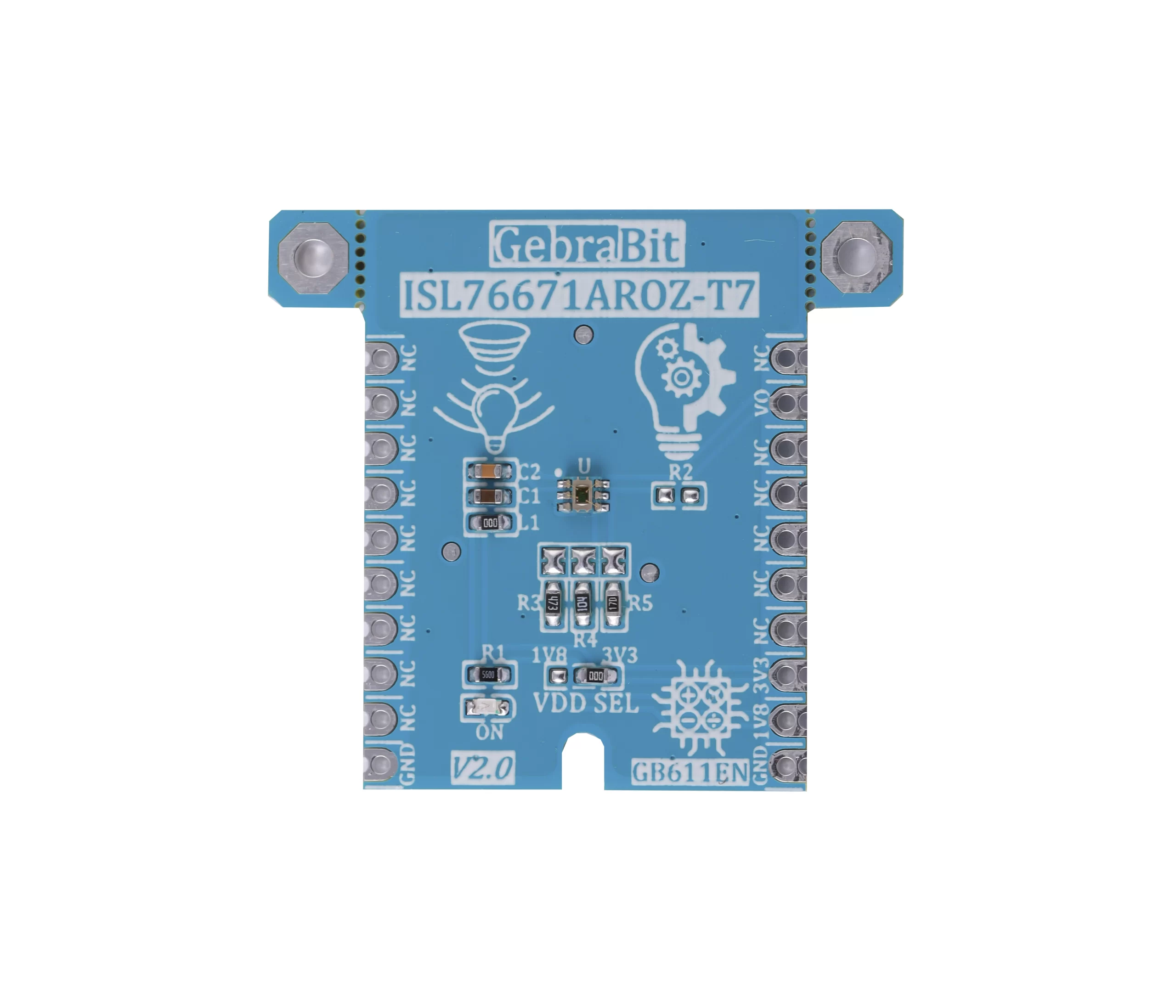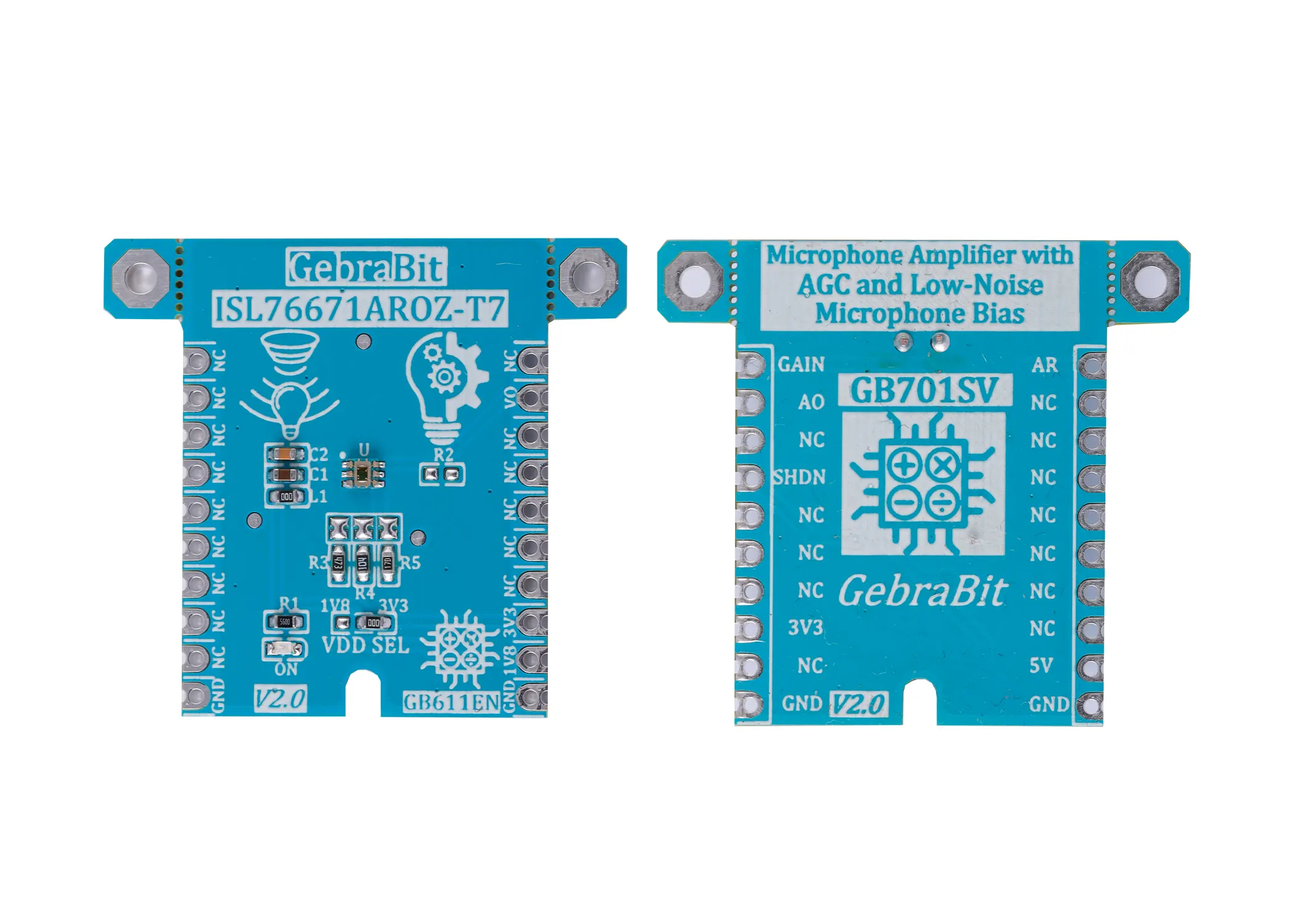Today, ambient light sensors are part of smartphones, notebooks, other mobile devices, car displays and LCD TVs. These sensors are used to detect the amount of light in the environment, and in devices such as smartphones and notebooks, these sensors are used to automatically adjust the brightness of the display screen, according to the ambient light, as a result, this saves energy and increases the device lifespan.
In general, there are three common types of ambient light sensors: phototransistors, photodiodes, and photonic ICs, which is made of a photodetector and an amplifier.

An overview of the ISL76671 sensor

The ISL76671 is a low cost, light-to-voltage silicon optical sensor combining a photodiode array, a non-linear current amplifier and a micro-power op amp on a single monolithic IC. Similar to the human eye, the photodiode array has peak sensitivity at 550nm and spans the wavelength range 400nm to 600nm, rejecting UV and IR light. The input luminance range is from 0.01 lux to 100 lux.
Extending dynamic range while maintaining excellent sensitivity in dimly lit conditions. As such, the part is ideal for measuring incident daylight when mounted behind heavily smoked bezels used around displays or behind mirrors.
Specification
Application
- Output type: Analog-Voltage
- Operating Range: 0.01 to 100 lux
- Wavelength Range: ~380 to ~600 nm
- Peak Wavelength: 550 nm
For more specifications, please refer to datasheet
- Display backlight control – central info display and instrumentation
- Anti-glare mirror systems – specified to operate behind Bezel mounting
ISL76671 module Key Features
- User-selectable module power supply voltage between 1V8 and 3V3
- Output scaling adjustable by jumpers
- Analog voltage OUTPUT
- On Board, ON/OFF LED indicator
- Pin Compatible with GEBRABUS
- It can be used as a daughter board of GEBRABIT MCU Modules
- Featuring Castellated pad (Assembled as SMD Part)
- Separatable screw parts to reduce the size of the board
- Package: GebraBit small (36.29mm x 32.72mm)
GebraBit ISL76671 module

GebraBit ISL76671AROZ-T7 Is a light-to-voltage silicon optical module close to the human eye spectral response with rejecting UV and IR light.
GebraBit ISL76671AROZ-T7 module can operate with “1V8” or “3V3” supply Voltages by Considered “VDD SEL” jumper selector.
The User can set the output scaling of the ISL76671AROZ-T7 sensor by using considered onboard jumpers.
Considering that it is difficult to access the sensor pins, the user needs a starter circuit and driver for the hardware development and of course the software development of the ISL76671AROZ-T7 sensor. GebraBit implements the ISL76671AROZ-T7 sensor circuit and provides access to sensor pins for the convenience of users.

It is enough to put the GebraBit ISL76671AROZ-T7 module in the BreadBoard, then by applying the proper voltage set up the GebraBit ISL76671AROZ-T7 module with any of Arduino, Raspberry Pi, Discovery board, and especially we recommend using GebraBit microcontroller development modules (GebraBit STM32F303 or GebraBit ATMEGA32 module) then receive the data.

The reason for our recommendation when setting up the GebraBit ISL76671AROZ-T7 module with GebraBit microcontroller development modules (such as GebraBit STM32F303 or GebraBit ATMEGA32), is the presence of an internal 3V3 regulator on these modules and the compatibility of the pin order of all GebraBit modules together (GEBRABUS standard), it’s enough to Put the ISL76671AROZ-T7 in the corresponding socket as shown in the above picture and develop the desired sensor module without the need for wiring.
Introduction of module sections

ISL76671AROZ-T7 sensor
ISL76671AROZ-T7 sensor is the Ambient Light sensor of this module which is placed in the center of the module and its circuit is designed.

VDD SEL
According to the state of the VDD SEL selector jumper 0R resistance, the main voltage of the sensor power supply is selected between “1V8” and “3V3”.

Output scaling jumpers
According to the state of these jumpers and applying voltage to the module by the corresponding pin, the output of the sensor can be adjusted.

Power LED
According to the state of the VDD SEL jumper and applying voltage to the module by the corresponding pin, this LED is lit.

GebraBit ISL76671AROZ-T7 Module pins

Supply pins
- 3V3 and 1V8: These pins can supply the sensor main power according to the state of the VDD SEL selector jumper.
- GND: This is the ground pin for powering the sensor.

Analog output pin
VO: The output data of the sensor will be available in the form of analog voltage through this pin, and the output of this pin will change according to the state of the output scale jumpers and the change of ambient light intensity.

Connect to the processor

Connection with GebraBit STM32F303
Due to the compatibility of the pin order of GebraBit modules with each other (GEBRABUS standard), to start the GebraBit ISL76671AROZ-T7 module with GebraBit STM32F303 microcontroller modules, it is enough to easily place the GebraBit ISL76671AROZ-T7 module as pin to pin on the GebraBit STM32F303 module and start the module by applying voltage.
Here, for better understanding, the separate connection of these two modules is shown.

Connection with GebraBit ATMEGA32A
Due to the compatibility of the pin order of GebraBit modules with each other (GEBRABUS standard), to start the GebraBit ISL76671AROZ-T7 module with GebraBit ATMEGA32A microcontroller modules, it is enough to easily place the GebraBit ISL76671AROZ-T7 module as pin to pin on the GebraBit ATMEGA32A module and start the module by applying voltage.
Here, for better understanding, the separate connection of these two modules is shown.

Note: When using GebraBit microcontroller modules, note that the VDD SEL selector jumper of the GebraBit ISL76671AROZ-T7 module is set to “3V3” so that you can easily get the “3V3” voltage from the microcontroller module.
Connection with ARDUINO UNO
Follow the steps below to connect the GebraBit ISL76671AROZ-T7 module to ARDUINO UNO:
- Connect the “3V3” pin of the ISL76671AROZ-T7 module to the “3V3” pin of the ARDUINO UNO board output (red wire).
- Connect the “GND” pin of the ISL76671AROZ-T7 module to the “GND” pin of the ARDUINO UNO board. (Black wire)
Connect the “VO” pin of the ISL76671AROZ-T7 module to one of the ARDUINO UNO board analog pins (blue wire).
How to connect the above mentioned steps can be seen in this picture:




